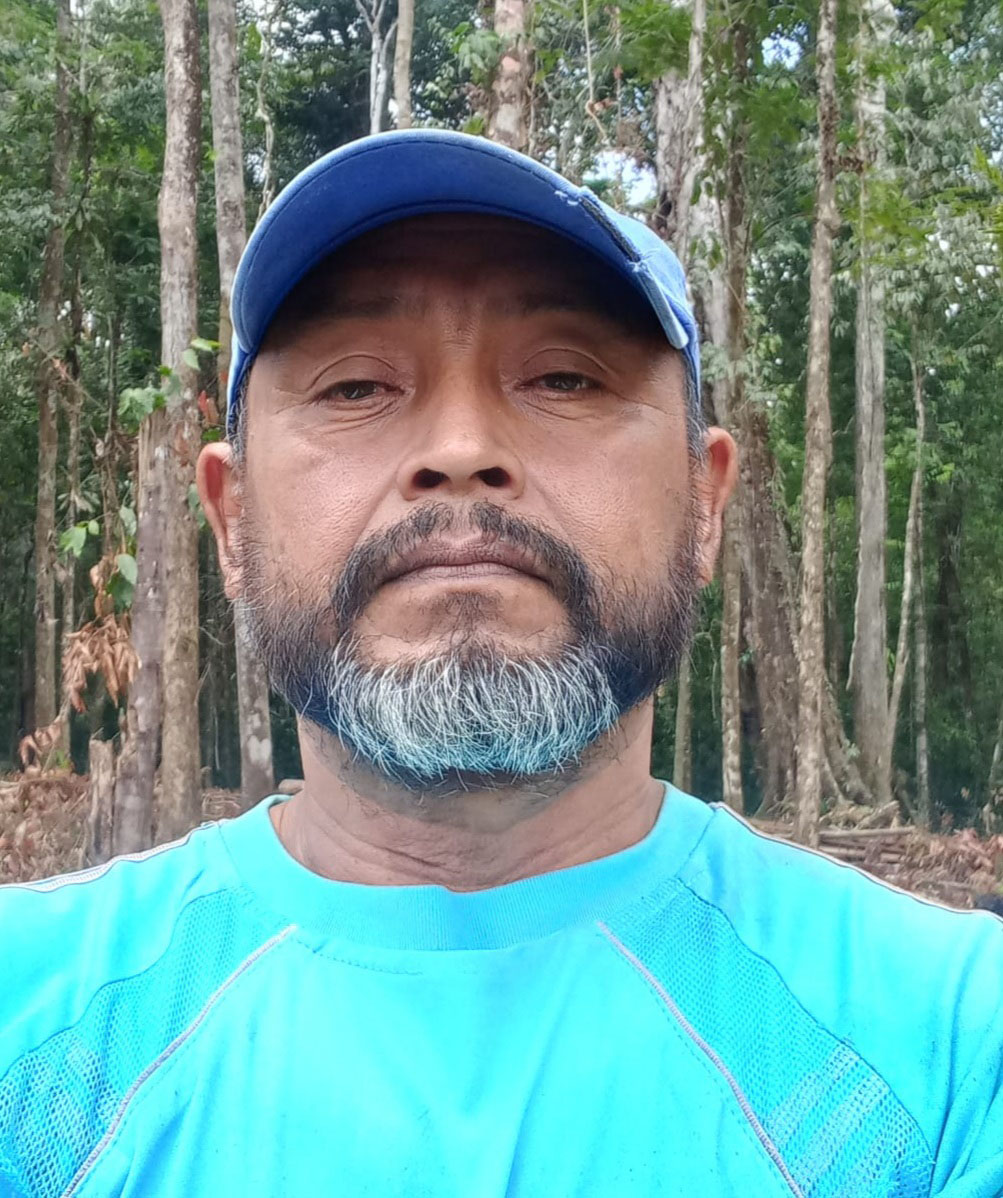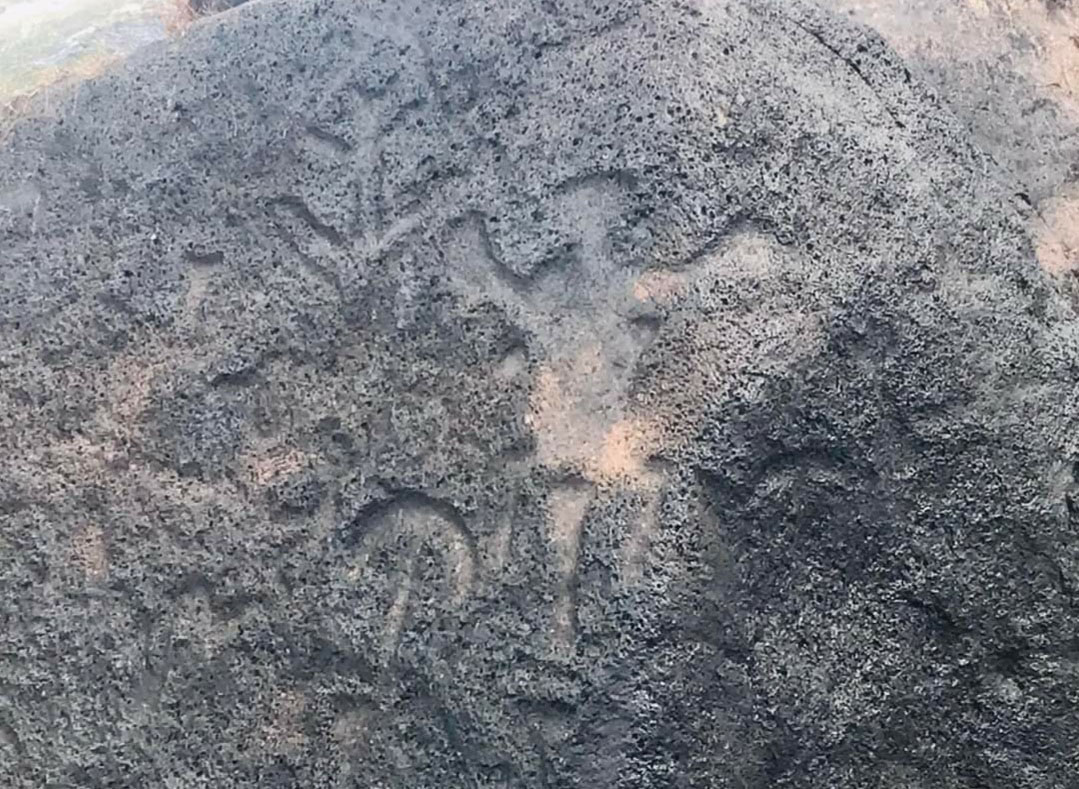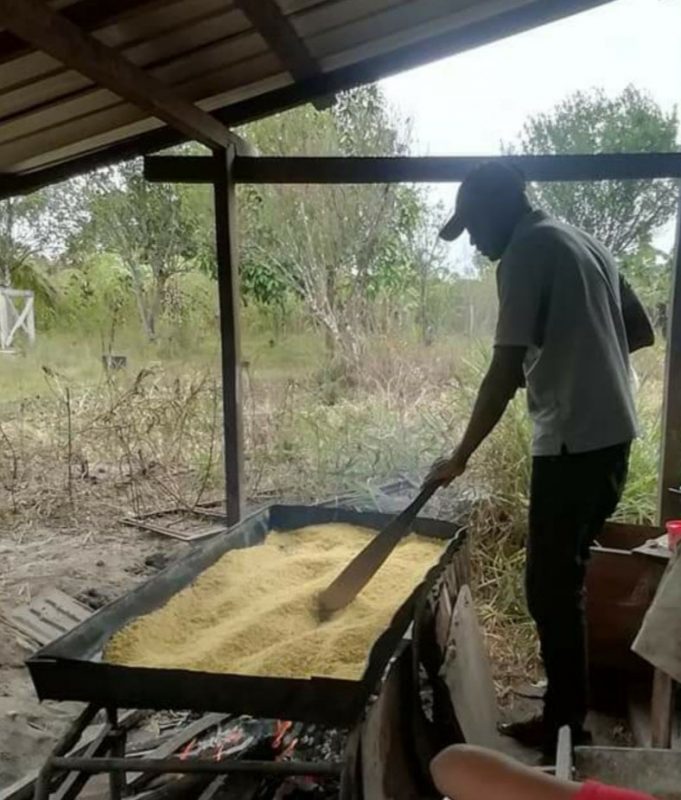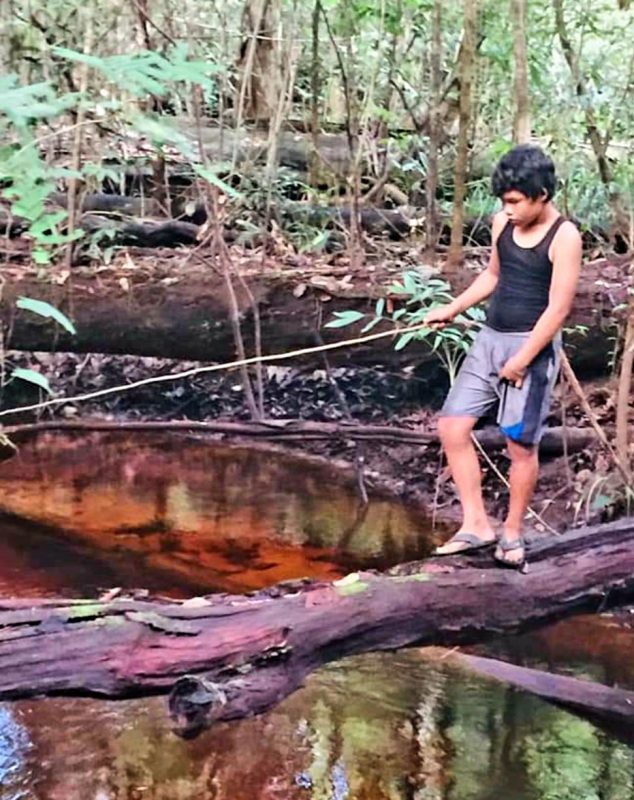Bradford Allicock, the incumbent toshao of Fairview Village in the North Rupununi, has been involved with the Iwokrama River Lodge and the rainforest reserve from the inception. He has also been integral to the development of Fairview Village and wants to see both places thrive while maintaining their pristine settings.
“All my life I have worked to develop Iwokrama and Fairview. I gave Iwokrama 28 years of unbroken service. After that I returned twice and it’s now two years since I have not worked with them full time. It’s 24 years now that I am living in Fairview and making my contribution,” the 54-year-old Allicock told this newspaper during an interview.
Fairview is unique in that it is the only village in the Iwokrama international rainforest reserve. Allicock has been toshao of the village for a total of 15 years.
He was 21 when he joined his father, Robert Frederick Allicock, known as Uncle Fred, and a group of men from Annai and surrounding communities to find a suitable site for the development of the Iwokrama River Lodge.
Sometime after then president Hugh Desmond Hoyte pledged 371,000 hectares of rainforests for international conservation in 1989 and the project was launched under the auspices of the Commonwealth Secretariat, Allicock was part of the reconnaissance survey to find a site for the river lodge.
After the project was launched, people in the nearby communities were mobilised and made aware of its importance, Allicock said. After several workshops, his father was selected to head the team to conduct the reconnaissance survey.
“We started the survey at Buru Buru then we went through Siparuni, up the Essequibo River to Kurupukari Crossing. From the crossing we went to Annai by road then to Quatamang Landing into Rewa, Apoteri and back to Kurupukari Crossing. After reconnaissance and assessing the entire area, we found that the most suitable site was one kilometre from Kurupukari Crossing and that is where the lodge is now found. That was the highest point during the rainy season with easy access to the Georgetown-Lethem Road and easy access to the airstrip in Fairview. Access to the site of the proposed river lodge was also possible by boat,” he revealed.
Once the site was identified, again under the leadership of Uncle Fred, they cleared the land in preparation for the construction of some buildings where visitors to the rainforest reserve, including researchers, would stay.
“On the 18th September 1993 with a team from Annai, we started to erect those thatched huts that were there initially. We had teams of researchers coming in from overseas. Money was also coming in and eventually we renovated the huts and made them into cabins along with other upgraded accommodation,” he related.
Over the years, Allicock worked as a ranger then as head ranger at the river lodge. For a number of years, he was also assistant manager.
“When the manager had left, I worked as the acting manager for a year. When they filled the position I continued as an assistant manager and as head ranger. At one time I was holding two posts at the same time,” he said.
He recalled that when Iwokrama ventured into tourism, its team of rangers visited surrounding communities on a monthly basis to update them on how the project was progressing. Then the 14 communities found around Iwokrama formed the North Rupununi District Development Board (NRDDB) to enable the toshaos to meet on a quarterly basis to monitor their communities’ development and at the same time to be updated on Iwokrama’s.
As one who has seen the birth, growth and development of the Iwokrama reserve and has worked on the site, Allicock is “not quite happy with the way things are at present.”
Prior to the onset of the Covid-19 pandemic, Allicock said, plans had been in place to upgrade facilities and personnel. “With Covid-19 everything closed down for some time. Now to get back on its feet it is taking some time. Iwokrama needs to get to the standard they had set. As rangers, as guides, we worked together as a team to ensure visitors got the knowledge and the experience of the place. It does not appear that the team spirit is there anymore. When I worked there, we worked hard and we were satisfied with what we did. We did presentations, we made visitors feel welcome and at home in the jungle and had them see the things they paid to come and see,” he said.
“The rangers and guides there now need more exposure. They need to go on more training programmes. In my time, we were exposed to training at the University of Guyana. We were exposed to public speaking. We had to build our confidence so that when people came we could stand up and make presentations. Right now, many of them are shy. Some cannot do presentations properly and that is what is beating them.”
Moving to Fairview
Allicock, who is originally from Surama, moved to Fairview in early 2000. He was working at Iwokrama as head ranger at the time and the distance he travelled to and from work on a daily basis was gruelling. So he decided to relocate. He applied to Fairview Village Council for residency and once his application was approved, he moved to Fairview.
He said he also saw opportunities for personal and community development in Fairview Village. “In 2001, I was nominated as one of the candidates for the toshao and I won the elections. I was toshao from 2001 to 2013,” he stated.
Around that time, the government instituted term limits for toshaos and Allicock was ineligible to contest the toshao elections immediately after 2013. Three other toshaos then served the village until 2021, when he was once again elected. He is currently eligible for a second consecutive term.
“Since I was first elected I have done my best. I’ve pushed our people to build the community. I think I did quite a lot during those years to build the village. I’ve got an upgraded airstrip done. I got a health centre built, teachers’ quarters built and a new school building built. I got a multi-purpose building built with grant funding. I got a lot of construction work going to build the village’s infrastructure,” he said.
“When I came here and just before I became toshao, the population was 76 in five extended households. Now we have 86 households with 454 people. We have some more new births expected soon.”
Origins Allicock’s roots are in Fairview.
“My father’s father was of Arawak, African and French origin. He came here from the Upper Demerara River during the latter days of the cattle trail. My grandfather had a big place here at Fairview and my father was born here. After my grandfather died, my father and his brother migrated to Quatamang. They lived there for a while then the two brothers and a sister moved to Annai and then to Surama,” he related.
“At Annai, my father met my mother. They then moved over to Surama and invited other people to join them. That was how they started to build Surama.
“When my grandfather was in Fairview, the Andries family was also here. They, too, came here during the latter days of the cattle trail… They are Macushi and Arawak. The descendants of the Andries are Ethel, Sheena, Shirley and Jean Andries, four sisters who are recognised as the elders of the community. Their brother David and his wife died but the sisters are still alive and well.”
The Andries have always remained in Fairview.
“I am the only Allicock who came back to my father’s birthplace,” he said.
Delineating his ancestry, he said, “I am Macushi mixed with Arawak, African, French and Portuguese from my father’s side. I’m Macushi mixed with Portuguese from my mother’s side. My mother, Francesca Allicock, was a Scipio before marriage. Her great grandfather came from Brazil, met his wife, a Macushi, in the Pakaraimas. They settled in Annai where they had children.”
Projects
Half of the multipurpose building is now being used as the village’s information communications technology hub. The community is linked to the outer world via cellular phones and the internet. Sewing groups were formed with funding from the Canadian International Development Agency and from the Department of Agriculture of Region Nine (Upper Essequibo/Upper Takutu). Though Fairview Village falls in Region Eight (Potaro/Siparuni) it is administered by Region Nine for logistical purposes.
The Region Nine agricultural department also funded the construction of a guest house which is nearing completion and the sinking of a well for potable water.
The construction of a benab at Fairview to make presentations and to welcome tourists to the village was funded by a presidential grant.
A number of projects completed or in progress were funded by presidential grants. These include the renovation of the community centre, the establishment of a restaurant and bar at Kurupukari Crossing, the construction of a sanitary block and the village office.
“Some of the projects started under the previous toshaos. I am trying to complete some before this term ends. Some projects kept on banking up and I have tried to complete them,” Allicock said.
The village has also had its fair share of failures but they are lessons learnt, he noted. Fairview’s youth initiative project, he said, flourished, but after the leadership of the village changed “everything went down.”
With funding received under the Low Carbon Development Strategy (LCDS), the village council has bought a minibus and is also repairing the village’s Bedford truck.
The village has also begun to gather materials for the construction of two cabins for tourism with LCDS funding. “Materials are already being procured. We have to furnish the buildings. We don’t have funds for furnishing but we’ll get to that,” he said.
If re-elected, Allicock said, his objective is… “to complete all 21 projects on my hand at present and get our people ready for training and in place to manage them as best as possible. That is my aim. I’m looking to get school leavers trained in a number of areas so when others leave the jobs or move on, we still have people with the knowledge and experience we can fall back on. My wish is to get them trained not only in one area but in several areas.”
With the construction of the Kurupukari bridge in the pipeline, Allicock thinks the village economy should pick up even further but security and other monitoring measures would have to also be put in place.
Tourism
Compared to Iwokrama, Surama and other places in Region Nine, Allicock said, “We are small in tourism. We have a partnership with Iwokrama River Lodge that sends tourists to us and we give them village tours. When our cabins are opened, we will have more weekly village tours. Village tours include viewing the processing of the cassava root in its various stages to make farine, cassava bread, cassareep and tapioca.
“We will market our cabins independently of Iwokrama. They should be up and running by the end of this year or early next year.”
At present he is hoping to tap into training courses that Iwokrama conducts for housekeepers and tour guides during the year. Most of Iwokrama’s housekeeping staff is from Fairview. “We hope they can train our people,” he said.
Fairview offers sport fishing (also called game fishing) and to date the village has had visitors from China, Japan, Germany and other parts of Europe and North America.
“Four or five persons may come to do the sport fishing and then move on to other areas. We have nature walks. Birdwatching is also a very popular activity and one of the biggest activities in Iwokrama and in Region Nine. In the village we have the blue and yellow macaws and the harpy eagle nest. At the landing are the Kurupukari rapids and petroglyphs,” he noted.









